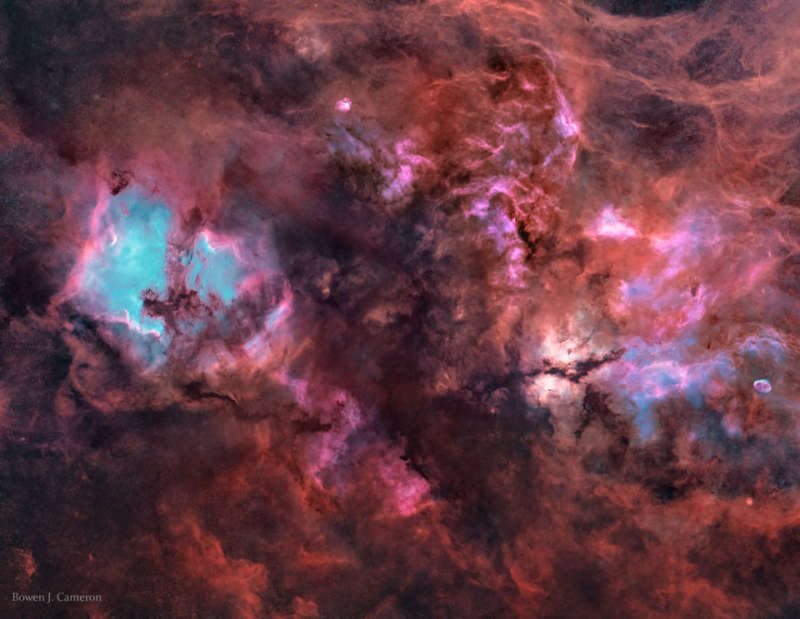
|
по текстам по ключевым словам в глоссарии по сайтам перевод по каталогу |
Credit & Copyright: Bowen James Cameron
Explanation:
The sky is filled with faintly glowing gas, though it can take a
sensitive camera and telescope to see it.
For example, this twelve-degree-wide view of the
northern part of the constellation
Cygnus
reveals a complex array of cosmic clouds of gas
along the plane of our
Milky Way galaxy.
The featured mosaic of telescopic images was recorded through two
filters: an
H-alpha
filter that transmits only visible red light from
glowing hydrogen atoms,
and a blue filter that transmits primarily light emitted by the slight
amount of
energized oxygen.
Therefore, in this 18-hour exposure image, blue areas are
hotter
than red.
Further digital processing has removed the myriad of point-like Milky Way stars from
the scene.
Recognizable bright nebulas include
NGC 7000 (North America Nebula), and
IC 5070 (Pelican Nebula) on the left with
IC 1318 (Butterfly Nebula) and
NGC 6888 (Crescent Nebula) on the right --
but others can be found throughout the wide field.
1999 2000 2001 2002 2003 2004 2005 2006 2007 2008 2009 2010 2011 2012 2013 2014 2015 2016 2017 2018 2019 2020 2021 2022 2023 2024 2025 |
Январь Февраль Март Апрель Май Июнь Июль Август Сентябрь Октябрь Ноябрь Декабрь |
NASA Web Site Statements, Warnings, and Disclaimers
NASA Official: Jay Norris. Specific rights apply.
A service of: LHEA at NASA / GSFC
& Michigan Tech. U.
|
Публикации с ключевыми словами:
Cygnus - emission nebula - Лебедь - эмиссионная туманность
Публикации со словами: Cygnus - emission nebula - Лебедь - эмиссионная туманность | |
См. также:
Все публикации на ту же тему >> | |
